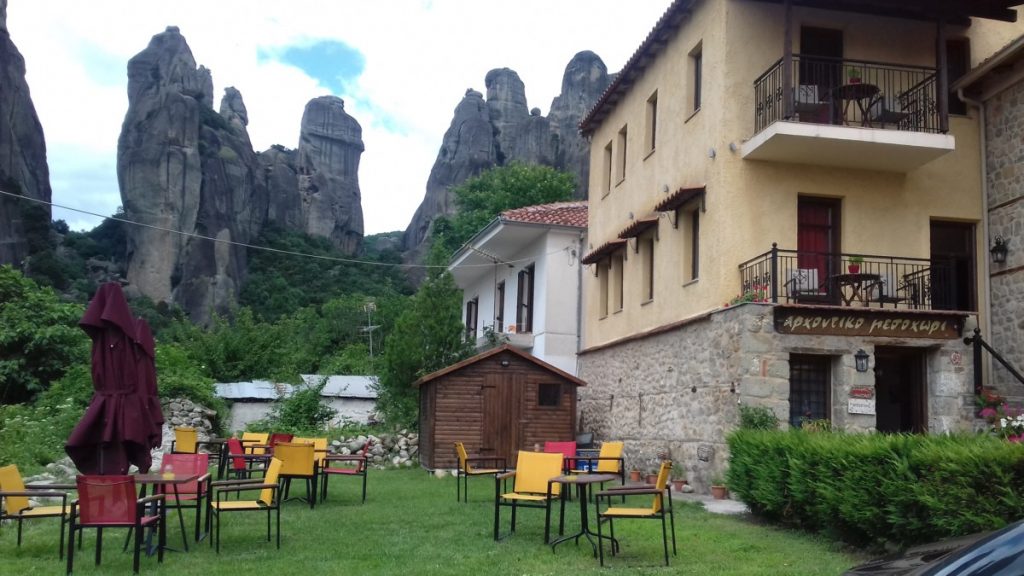On Sunday the 18th we sailed early from Meganissi to Lefkada where it was time for us to say goodbye to our sailing adventure. Julie and Kat took a taxi to the bus station to catch their bus back to Athens. Diane and Mike were staying on the boat for another week and were being joined by Alicia’s mother and a friend. We found a rental car for our next week’s adventure.
It was a long day – 7+hours of driving – to get to the Meteora region from Lefkada because we took the old roads through mountainous regions with very little traffic. We didn’t know there was a fast new road but this way was very scenic. It took us three tries to find a place that would serve us lunch. The first place offered me some spam in a can, the second place said they could fry up some eggs and then the third place served the very best souvlaki on the trip. For 20e we had four skewers of souvlaki, a salad and drinks.
Getting to Meteora you drive through a flat stretch of country. But then as you approach Kalambaka from Trikala you are rewarded with an extraordinary sight – projections of huge dark grey rock jutting up to the sky in a region that is not mountainous. Meteora is a group of rock pillars (pinnacles) 600 to 900 feet in height crowned by Byzantine Orthodox monasteries built over 600 years ago by hermitic monks.
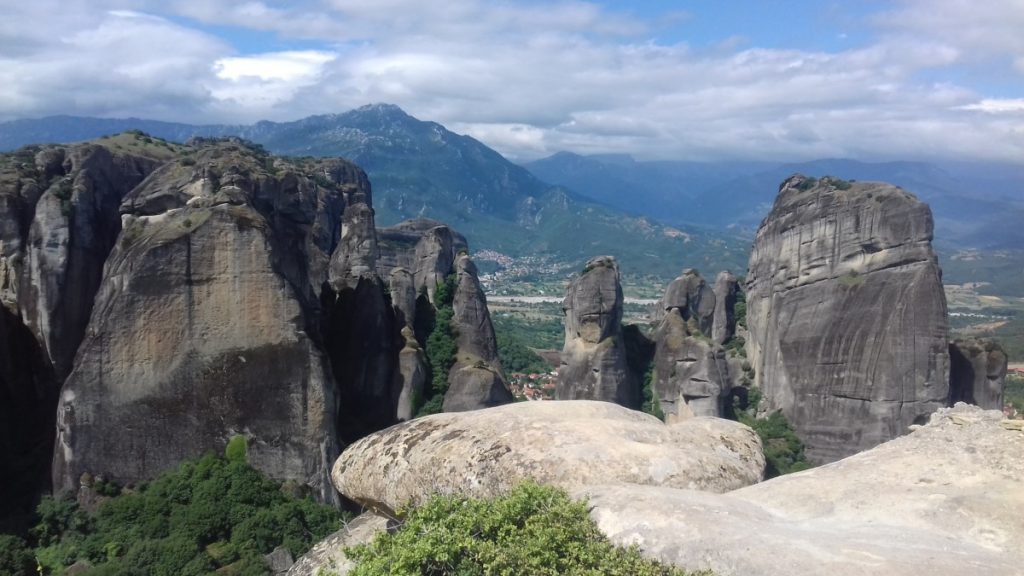
We bypassed the busy town of Kalambaka where most people stay in favor of the village of Kastraki. We stayed at Hotel Kastraki the first night for 80E and a balcony with views of the rocks. Had a nice meal at the Tavern Ziogos – mousaka, horta and cheese stuffed fried peppers for 21E. Happy Fathers’ Day Bill – thanks for doing all the driving.
June 19 – Exploring the Monasteries
We checked out of Hotel Kastraki after a mediocre breakfast. We decided we could find something just as nice for less than 80euros.
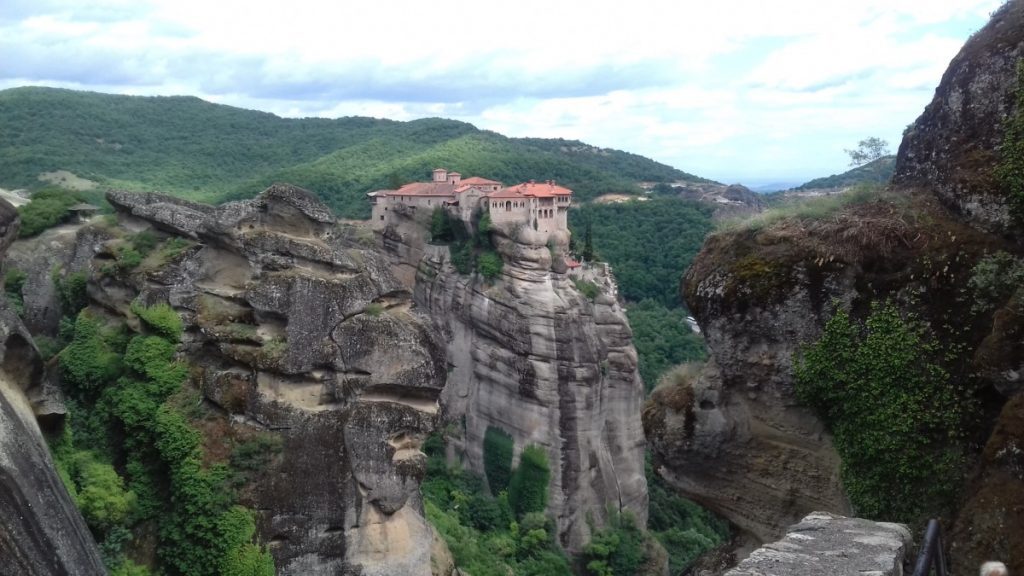
There are typically five monasteries that are open each day and they are a short drive from the village of Kastraki. You can possibly see 3 or 4 in a day if you start early. Each one requires climbing up and down at least 100 to 300 steps. There are strict rules on what you can wear and where you can visit inside each monastery. Each one has spectacular views from their perches on these pinnacles. You wonder what those early monks were thinking when they looked up to those peaks – I can build a complex up there even though I can’t even climb up there!
We got an early start to beat the heat. Our first stop was Agios Nicholas – a small quiet monastery. It’s most interesting feature were the wall frescoes painted by Cretan iconographer Theophanis the Monk.
Our second stop was Vaarlam named after its founding monk. The Holy Monastery of Varlaam is the second largest monastery in the Metéora complex. It was built in 1541 and embellished in 1548. The church was beautiful but a guide was talking very loud in French to multiple groups right in the middle of the church. That was annoying so we moved on. The exterior had nice views and inside there was a museum which showed the history of the monastery on a timeline of Greek history. I learned something new – about neomartyrs in a colorful exhibit of modern icons. These were saints killed during the Ottoman empire.
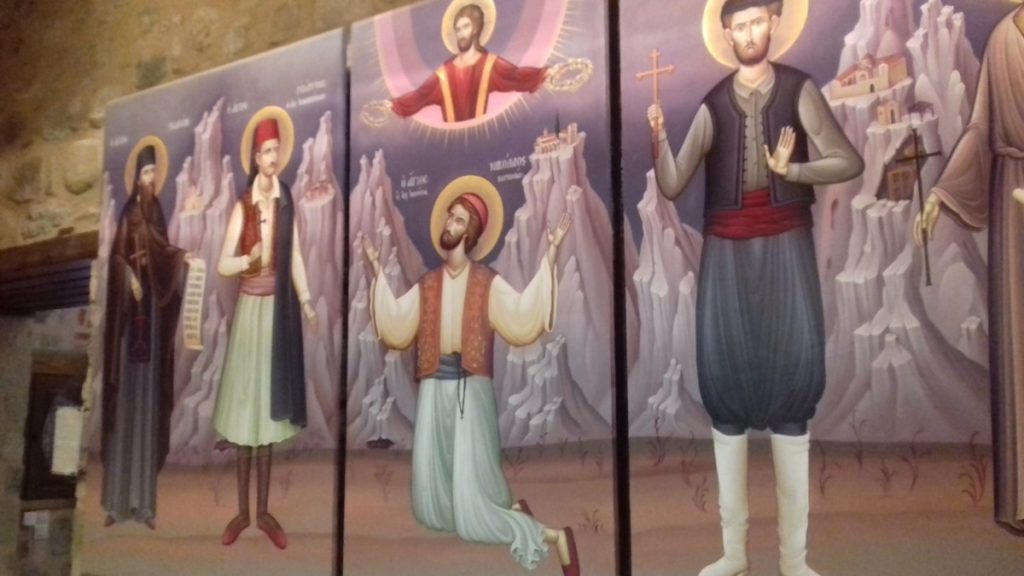
Virtual tour of the outside: https://www.360cities.net/image/meteora_holy_monastery_varlaam
The crowds were getting too much for us by 11am so we left to find a Wind store to get more data on my SIM card and we needed to find a place to do laundry and a hotel. We were successful on all three tasks. Laundry drop off at King Hotel. 8 euros and ready in four hours. Cute guest house in upper old village of Kastraki called Archontiki Mesohori (village center).
After a rest we took off (too late) to see the Megalo Meteora monastery, the best and biggest one. We got there a half hour before closing so we didn’t get to see much. We were just getting started in the Folklore Museum when they turned off the lights. We droved another 5KM up the mountain following signs for Eagles Nest Taverna in Vlachavas. It wasn’t much of a town but the Taverna had some great views down the valley.
The highlight of our evening was a walk up to a little artist studio near our hotel. We saw this sign and it intrigued us.
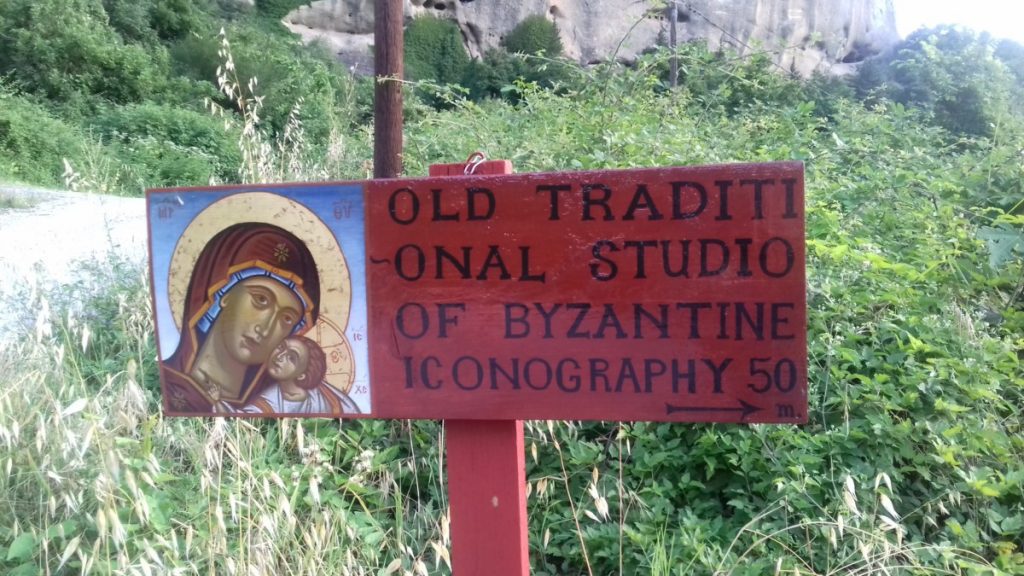
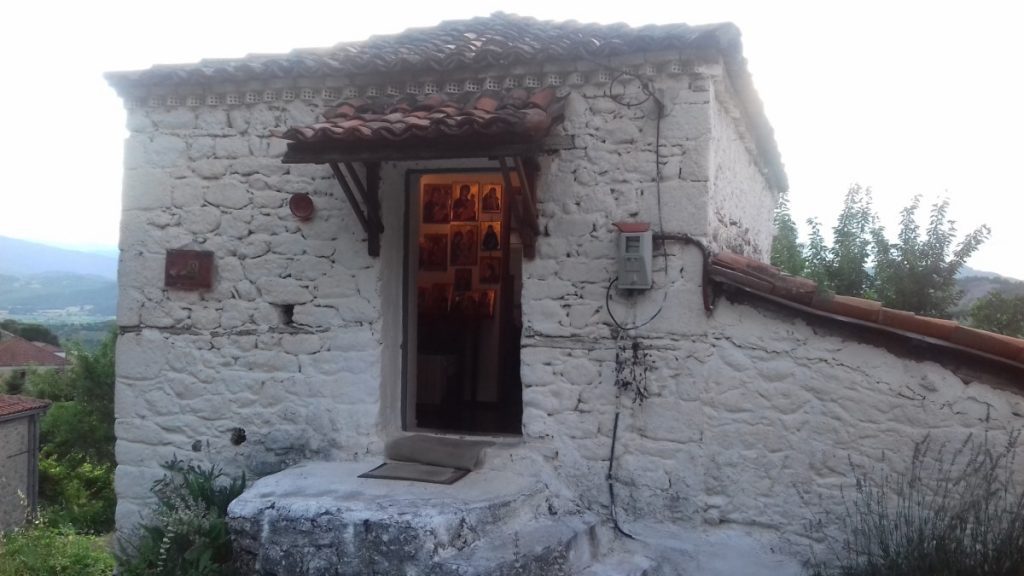
We found the icongrapher, Dimitris, hard at work in his little studio. He told us his family has been iconographers for several generations. He showed us his collection of family antique icons and described the process of creating an icon. His family’s home had been bombed at the end of World War II and all they had from the original buildings was his studio. We bought a St. George icon for George. Since we didn’t have enough cash he let us take the icon home with us and we made plans to meet at 10pm to give him his money.
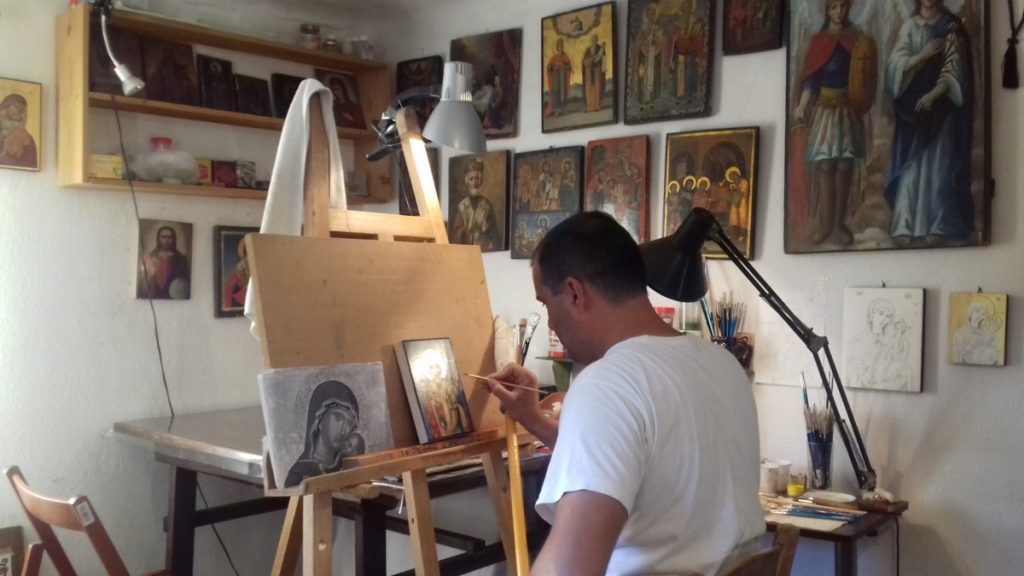
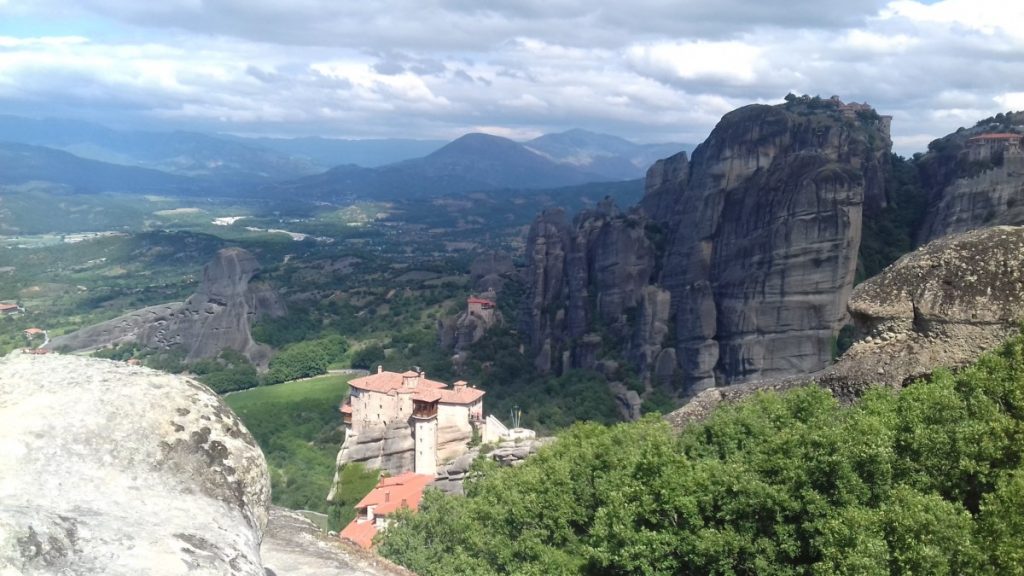
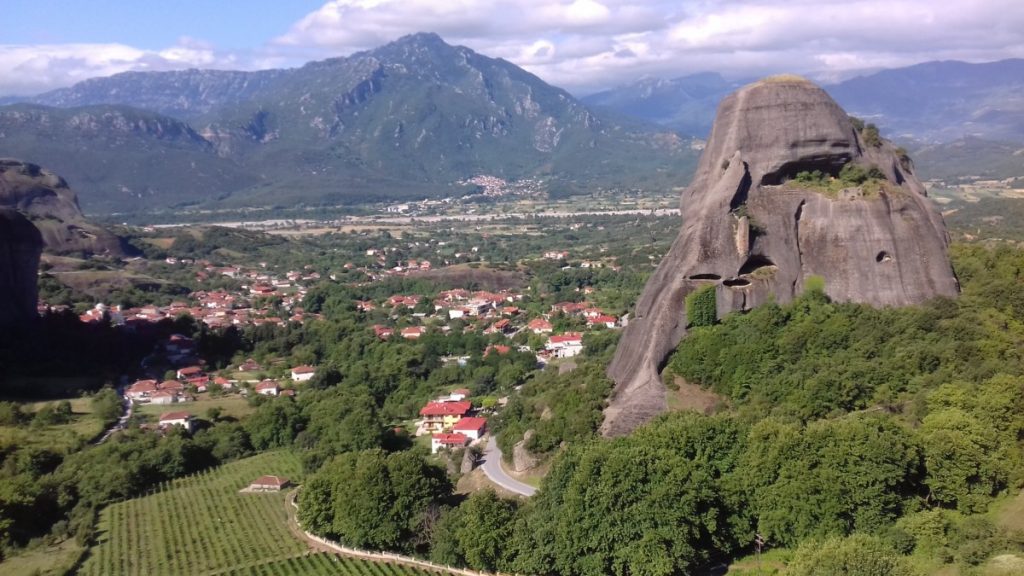
Kastraki Village
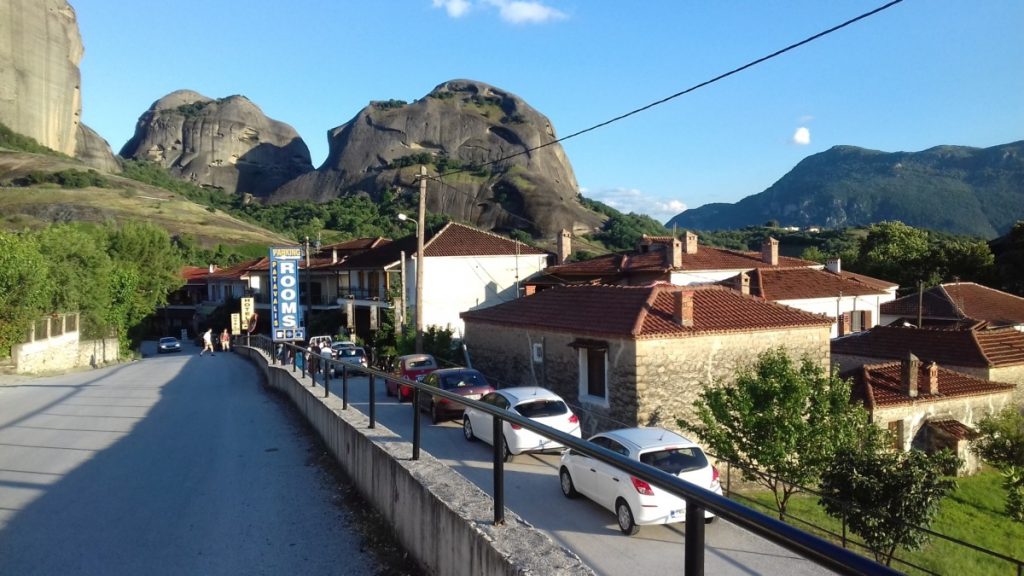
Our lodging for second night in Kastraki
